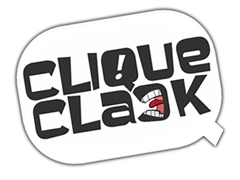CliqueClack Hungry Trolls podcast – Episode 5

Jay and Vinnie discuss the powerful psychotropic drugs Jay is about to take, as well as Paul Thomas Anderson’s ‘The Master’.
Friend, contributor and comedian Jay Black is switching things up a bit with the new site and is bringing his Hungry Trolls podcast here, to a new home on CliqueClack. Jay joins friend and comedian Vinnie Nardiello in what he tells me will be a twice-a-week deal!
Make sure you tune in and make your friends tune in as well, and comment and rate us on our iTunes page! We’re also on Stitcher!
Please keep the comments coming and let us know what you think. Got suggestions? Questions? We’d love to hear ‘em! Make sure you get everyone you know to subscribe to the podcast in iTunes (and rate us, please!) or via some other feed — we feed Jay’s ego a careful diet of traffic numbers and subscriber count, so let’s not let that sucker die of starvation. You can also check-in via GetGlue!
Thanks for listening!
 CliqueClack
CliqueClack
Watching in the theater in 1999, I actually really liked the midi-chlorian detail. Obviously, it was only added to justify Qui-Gon being so sure that he had found the Chosen One based on more than just his gut instinct. The concomitant meaning, though, underlined just how effectively the Empire had erased the Jedi and their history in 19 years. The layperson’s viewpoint, as expressed by Han Solo, was an ancient religion and its attendant mysticism and ritualistic/ceremonial weapons. This scene finally established scientific understanding and analysis in Jedi doctrine, and reassured me that the Order’s failings were organizational and political rather than the refusal to adapt to technology. I appreciated that small theme in the prequel as well as the larger Republic-into-Empire transformation and the good laser color vs. evil laser color inversion.
The midi-chlorian scene, however, doesn’t make Force affinity any more unevenly distributed than the original trilogy did. As Luke said, the Force runs very strongly in some bloodlines, so some individuals always had a genetic advantage, although the basic affinity seemed of little reliable use without study and training. Neither the OT nor the prequels ever said that only certain people got the Force (or midi-chlorians), just that some were more “gifted” than others, and those were the ones the Jedi abducted as children to replenish their asexual ranks. The concept that only these Force-sensitives could ever use the Force came from non-movie canon, as far as I can tell.
All very good points, Ryan.
I guess the greater point I was trying to make was that the science in Star Wars was always very “mushy”, bordering more on fantasy than on science fiction. The benefit of this was that the niggling questions of hard science fiction (like, “how does a hyper drive work” or “why does Jabba the Hutt get a slug-boner from a coked out, gold-bikini wearing Carrie Fisher instead of someone from his own species?”) are waved aside by the fact that this is more a fairy tale than something that follows hard and fast scientific rules.
It’s a minor point, I know, but it’s one that makes a difference when trying to suspend your disbelief. For instance, if you’re dealing with a universe that has magic in it, you can do whatever you want and no one will bother you with how it was accomplished. Switch from magic to science, however, and all of a sudden you start questioning whether or not whatever happens on the screen could actually happen in the real world.
(Consider for a moment the techno-babble that plagued “Star Trek: The Next Generation” and “Stark Trek: Voyager”. Saying “NEUTRINOS!” on those shows was the equivalent of Samantha wriggling her nose on “Bewitched.” Yet we nerds were far more annoyed with how Star Trek handled it, because it tried to play real world science as fantasy world magic.)
Now, in my heart of hearts, I know that the science of science fiction and the magic of fantasy can and will cross over to accomplish the same story-telling goals, but it’s hard not to view them differently. If it’s magic, it doens’t have to follow any rules. But if it’s science, well, it better jive with my understanding of science, or, at the very least, be explained and consistent in the world that you’re creating.
I believe strongly that the OT followed the fantasy mindest and that the PT (as well as the Expanded Universe) tended to follow the sci-fi mindest and that the two were never really reconciled by Lucas.
Okay, I should stop writing now because Ogre just kicked in my door and screamed “NEEEEERRRRRRRRRRD!” at me.
I was lucky in that I never made the science-magic distinction in my genre entertainment. In either case, the key to worldbuilding is internal self-consistency, and both Star Wars and Star Trek worked for the most part in that regard for me (if you’re constantly throwing out all the old rules, you end up with Harry Potter). Plus I knew early on that Star Wars was space opera, and Star Trek was “Wagon Train to the stars,” so I never confused them with hard SF (I was going through Tolkien, Asimov, Heinlein, Zelazny at the time). So I was never more intellectually rigorous with sci-fi than with fantasy. Heck, at least Star Wars never had those godlike meddling aliens like Q or the Organians.
I watched the OT in the theaters as a child, and caught Star Trek reruns every weekday growing up. The strange part was that I saw everything, even cartoons, on a 9″ Toshiba B&W TV, so for years I never realized some shows from the ’60s were broadcast in color. Star Trek, Get Smart, Bewitched and the rest are still B&W shows in my lizard brain.
Roll for surprise, Jay. Roll for surprise.